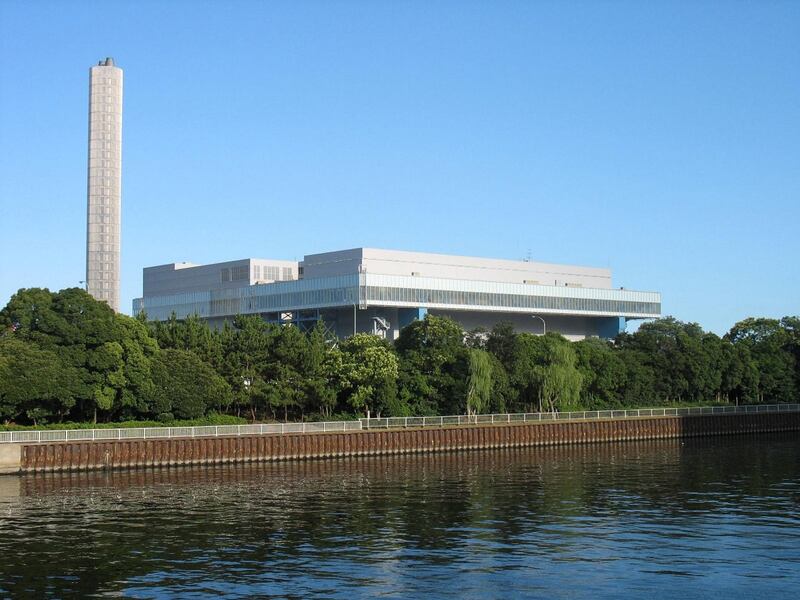The human race’s production of waste is faster than their ability to build cities, according to a report from the World Bank.
In 2012, it would take less than three months for the average city-dweller to produce their weight in municipal solid waste creating concerns on the capacity of urban environments to treat refuse.
But in Tokyo, the Japanese have a history of tackling the cause of the issue, to manage its effect by minimising the total amount of refuse produced.
Materials were so highly valued in Tokyo from 1603 to 1860 AD – when the city was named Edo – that the period was named their recycling era, sprouting recycling businesses and systems to handle household waste and repair, reuse and otherwise collect items.
Nonetheless some kitchen waste and other refuse was discarded in rivers, canals and vacant lots prompting the Edo shogunate (government) to establish regulations for gathering and disposing of refuse in a single location.
In 1900, the waste disposal law – the first modern refuse treatment regulation – was enacted. In November 1924, the first refuse incinerator in Tokyo, the Osaki waste incinerator, was built. In the following decades, organised collection of waste was established and refuse treatment facilities were improved.
In 1954, the national waste disposal and public cleaning law was enacted to promote co-operation between national and local governments and citizens for refuse treatment and to process waste using hygienic treatment methods.
The Tokyo municipal government also implemented the Tokyo public cleansing ordnance to further promote environmental hygiene.
In April 2000, control of waste management operations was transferred to the Clean Authority of Tokyo 23 which now manages the operation of the waste disposal facilities in the city's 23 wards. There are 21 incineration plants in the capital, one of which is the Shinagawa Incineration Plant which caters to 128,000 households and a population of 344,000.
"Various efforts are being made to reduce refuse generation by recycling and maintaining hygienic living environments," said Hidenori Yokoyama, the plant's manager. "In March 2006, the incineration plant was born and it has the latest facilities."
The plant is located at the heart of Tokyo where a large variety of waste is produced daily. The authority works to manage the treatment of this ever-changing flow of refuse. "The plant mainly treats the refuse of the Shinagawa ward," he said. "Two refuse incinerators operate around the clock and treat the capacity of 600 tonnes of burnable garbage per day. This is equivalent to the waste produced by 600,000 people in one day."
With two gas-burner ash-melting furnaces, 180 tonnes of ash are handled daily.
"As one effort to prevent pollution, the exhaust gas produced when refuse is burnt is also treated using cutting-edge exhaust gas treatment equipment," he said. "The plant has a variety of equipment including the refuse incinerator, the ash melting furnace and exhaust gas and waste water treatment facilities. Oversight and control of all this equipment are conducted from the central control room and equipment control is managed efficiently from computers. Operators are on duty 24 hours a day."
The plant has set its own pollution standards that are stricter than legal requirements and uses the latest pollution prevention equipment to eliminate harmful substances. "The plant also uses the heat generated from burning waste to generate electricity," Mr Yokoyama said. "Heat from the boiler generates steam that is sent to a steam turbine generator capable of generating up to 15,000 kilowatts of electricity. Half of this power is used to run the equipment in the plant and the other half is sold to electric power companies at 600,000 yens a year."
There are a total of 21 factories that process burnable garbage. The 47,000sqm-plant separates household garbage by burnable and non-burnable. "Last year, we treated 15 million tonnes of garbage – about 600 tonnes daily," he said. "Half the area of the incineration facility is accounted for gas clean-up facilities and we also have a wastewater treatment facility as well as solar panels and a surrounding green area to allow residents to live around."
Tokyo residents support the initiative to be able to produce energy for their country which relies on imports for almost all of its energy needs. "I think it is very a good and important idea to convert garbage into energy," said Ayako Yokota, who was born and raised in the capital. "We are poor with natural resources and we import more than 90 per cent of the energy we use from abroad. It is apparent that we are too dependent on imports when talking about energy so I consider it is very important for Japan to study, create and consolidate any system or technology to produce energy from what we already have and be less dependent on imports, even if the amount of the energy the new system can produce is small."
She said globally, the world also has to work on increasing the portion of renewable energy given the limit of crude oil and sources. "As a Japanese citizen living in Japan, renewable energy has been a big issue after the earthquake of in 2011," said the 31-year-old. "I am opposed to the existence of nuclear power plants so I support the production of renewable energy in [any way] to variate and to increase the percentage of renewables."





